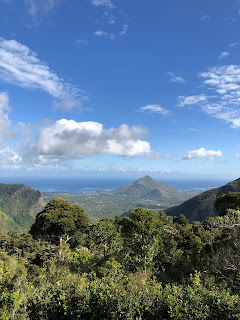Midwinter Motivation - Least Sandpiper, August 2016
In the middle of winter, during those long, often birdless, walks around our patch with few more species on our list than there were at the end of New Years' Day, we could all do with a bit of motivation. A reminder that anything can happen in birding, even things that seem scarcely believable.
The bird was performing outrageously well from the screens at the base of the hide walkway. Far too close for scopes and close enough that I could get this photo with a phone camera:
I've seen plenty of Least Sandpipers in the USA but even there, I have never seen one so close. It gave a great opportunity to study the plumage details. Who knew I'd have to employ them so soon?
After getting our fill, my dad and I were scanning the far side of the scrape in bright sunlight. Everything was very backlit and views were terrible. A nearby birder, Gus Robin, alerted us to a sleeping bird on the far shore which looked interesting. His bird was clearly a stint sp. sleeping on the far side with a Dunlin for size comparison. Initial views were truly terrible, but this was clearly something different, even if just a Little Stint.
 |
| Initial views were truly awful |
Thankfully, it woke up and started moving around. By this point, other birders had been put onto the bird and conversation had started. It was immediately clear that this wasn't a Little Stint. Views weren't perfect but were good enough to narrow it down to one of 3 options - Temminck's Stint, Least Sandpiper or Long-toed Stint.
Our initial thought was the most likely one - surely the Least Sandpiper had just secretly moved across the lake? At this point, the bird had drawn a crowd, and after some communication with the other side of the hide we confirmed simultaneously that the Least Sandpiper was still happily feeding in front of its crowd on the other side of the lake and dismissed this idea. Birders were watching both birds at the same time and confusion began to set in!
Next we considered the most likely alternative - Temminck's Stint.
The bird had moved closer now and away from the sun. Tim White had raced down to the marsh with his fantastic camera, so our views now were great. It is amazing how easily wishful thinking can creep into one's mind - thoughts of being amongst the finders of a Long-toed Stint was a difficult dream to dispel, but we were all determined to look at this bird objectively. The overwhelming probability was a Temminck's Stint (which I had never seen before) but birders experienced with this species were convinced that something wasn't right. The talk was leaning towards Least Sandpiper. A second one!
Descriptions were given, field notes were taken and photographs were snapped as it moved closer to the hide. As more people arrived the bird suddenly flew North, calling as it went, with the original bird still feeding happily on the western edge of the lagoon.
With the possibility of it having landed on nearby Colyford Common, a band of scopes and bins headed off to relocate the bird. Despite searching for several hours there was no further sign, but the photos and notes confirmed beyond doubt the general opinion in the hide - that this bird was miraculously a second Least Sandpiper. Had this bird come over with the other one? If so, why hadn't it been found 2 days ago with so many eyes looking? And why didn't they leave together? Certainly, the same front was likely responsible for their occurrence but was it just a coincidence that both birds have found themselves on the same small marsh in East Devon?
These questions will never be answered, but this experience has stayed with me and will always remind me that anything can happen in birding. A more factually precise recount written immediately after the event (rather than 6 years later!) can be found on Tim White's blog at http://timwhitewildlife.blogspot.com/2016/08/2-least-sandpipers-pics-of-both-birds.html. But sometimes I like to remember that day because the most improbable birds, the Varied Thrushes and White-chinned Petrels, do turn up, in the most improbable locations and circumstances, sometimes two at a time! I try to remember - miracles really do happen in birding. Never lose that faith, because if we keep going out and keep taking an interest in the birds around us, they may well happen to us.




Comments
Post a Comment